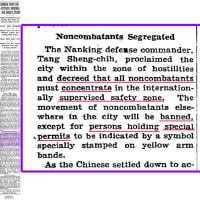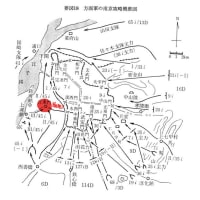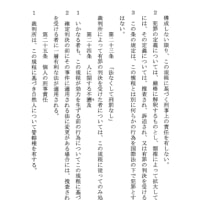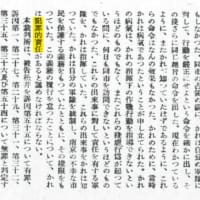CHINESE FIGHT ON TO SLOW INVSDERS
-----
Witness Finds Defenders on the Outskirts of Nanking Waging Bitter Warfare
-----
BEMOAN LACK OF PLANES
-----
They Admit Foe Takes Them Unawares --- Burn Buildings That Might Aid Attackes
-----
BY F.TILLMAN DURDIN
Special Cable To The New York Times.
NANKING, Tuesday, Dec. 7. ---
The hostilities along a five-mile front created by the spearhead of the Japanese advance on Nanking, where two tattered and sleepless Cantonese divisions were attempting desperately to hold up the invaders' drive, were viewed at close range by this correspondent yesterday.
Motoring toward Kuyung in midafternoon, I ran unexpectedly into the front lines only sixteen miles from Nanking. A mined bridge two miles beyond the Tangshan hot springs, where Generalissimo Chiang Kai-sheki in recent yeares has built up extensive military establishments and his Summer headquartes, brought the car to a halt. Warning me that the slightest disturbance of the innocent-looking batches of straw on the bridge would set off mines underneath, a group of nonchalant Szechwanese soldiers, in response to queries, shrugged, pointed to a hill a few miles ahead and said:
"Japanese are on the other side. It is dangerous and you should not go, but if you must see, never mind us.
Walk Across Bridge
My companions - a Chinese assistant and three American newsreel men -- stepped gingerly across the bridge and proceeded to a village just under the hill pointed out. Desultory artillery fire was heard on the left, and rattle of machine guns ahead grew louder as we went ahead.
In the village remnants of the battered Ninety-fifth Cantonese Division were bedding down for the night after three days of fighting without sleep and with almost no food. Captain Wong Tung-ling, despite his weariness, offered to show us the front.
Skirting a hill, we came into full view of the battle lines. A mile ahead Chinese and Japanese machine gunners were emptying their guns across a narrow valley, while to the left artillery units exchanged fire over a three-topped ridge. Bigger guns on the Japanese side were heard in the far distance to the right shelling Chinese troops in positions neare Tang Moutain.
The horizon was rimmed with smoke and dimly in the distance could be seen great billows of smoke. which, Captain Wong explained, arose from Kuyung, reduced to blazing ruins during the struggle for its possession.
Admits "Losing Fight"
"We are fighting a losing fight." Captain Wong said, "but we believe we can make the Japanese advance very slow and costly."
He complained bitterly of the fact that the Chinese were forced to fight "bling." He said:
"We don't know where the enemy is attacking. We are always being outflanked because we have no planes or other means of aerial reconnoissance to trace enemy movements."
As he spoke a Japanese observation plane wheeled into view, spying out the Chinese positions. We ducked for cover as the plane droned closely above, but the craft flew on without attacking.
Returning to the car we were halted by the stentorian warning shouts of a squad commander some distance from the mined bridge.
"Wait, we're blowing it up," he said.
A loud detonation followed and we were forced to make a long detour to reach the automobile.
The trip revealed that extensive preparations to resist the Japanese were being made throughout the area east of Nanking. The nature of the outer defense gave the impression that the Chinese were proposing to fight only a delaying battle until the approach to the very gates of the city, where heavier fortifications were evident.
Barricades Dot Highway
Between Tangshan and Nanking barricades were ready along the highway every mile or so, and nearer the capital there raged huge fires set by the Chinese in the course of clearing the countryside of buildings that might protect the invaders from gunfire. In one valley a whole village was ablaze. Trees and bamboo groves had been felled, the latter in such a manner as to leave a knife-sharp stubble to hinder the Japanese infantry. Judged by the Tangshan battle, the fighting around Nanking has most of the aspects of the open-field engagements of the United States Civil War, except for machine guns. Neither side was using trenches. Chinese troop concentrations were not markedly heavy in the Tangshan area.
Boy camp followers were numerous in the Tangshan area. These lads, 10 to 12 years old, are uniformed regulars serving as messengers, bearers and cooks, and sometimes in the very front lines they seem to enjoy the war as a game.
Villages to the east of Nanking were found deserted. Civilians had taken over the garrisons and refugees swarmed along the highway.
中国人は侵入を遅らせる為に戦い続ける
-----
記者は南京の郊外での交戦状態の応酬行っている守備陣営を見る。
-----
飛行機の欠如を嘆く
-----
彼等(支那人)は、敵(日本軍)がそれら(建物)を思いがけずに受け取ると認める。
--- 攻撃側を助けるかも知れない建物を燃やす。
-----
F・ティルマン・ダーディン
ニューヨーク・タイムズ 特電
南京 12月7日 火曜日
5マイル前において南京進出の日本人の先兵によって引き起こされる抗戦は、その何処でもボロボロで不眠の広東(Cantonese)の2師団は侵入者の‘進撃’を諦めさせる必死の試みつづけてはいたものの、昨日この特派員によって接した連山で観察されていた。
午後の中頃、句容(Kuyung, Jurong)に向かうおうと運転していた、南京から16マイル離れた前線まで案外と走れた。湯山温泉(the Tangshan hot springs)を越えた2マイルの小さな橋、蒋介石総統が近年に広大な軍事施設と彼の夏の本部として建設したところで、車を停止させた。
少し邪魔な橋の上の無害に見える一束の藁は地雷が下に置いてあると警告を受ける、素っ気ない四川(Szechwanese)の兵士のグループに、質問の返答には、肩をすくめて、数マイル前方の丘を指して言った;
「日本人は別側にいる。危険で貴方は行かない方が良い、しかしもし見なければならないなら、我々を気にしないで下さい。」
橋を渡る
私の付き添い-- 中国人のアシスタントと3名の米国人報道カメラマン --は、極めて慎重に橋を渡る足を踏み出して指摘された丘の真下の村へ行きました。漫然とした砲射撃が左に聞こえ、前方に向かって機関銃が大きくガタガタ唸った。
村に残った95人の広東師団の銃兵は、眠ることなく戦い続け、ほとんど食べ物もなく、3日後の夜寝具に倒れ込んでいた。Wong Tung-ling大佐は、彼も疲労しているにもかかわらず、前線を私達に見せると申し出た。
丘をうろついて、我々は前線を全て見渡せる所に着いた。1マイル先で支那人と日本人のマシンガンが狭い谷を渡り彼等の銃を空にし続けていた、左の傍ら砲兵団は、頂上の尾根の上で銃撃を交わした。日本側の大砲音が湯山近くの中国軍陣地の地点の右の遠くの地点で聞こえた。
地平線は、その距離では煙と薄暗く縁取られていた。そして王(Wong)大佐は、句容から立ち登っていると説明し、占拠のための戦闘の間に燃え尽きて廃墟と化した。
“戦いに敗れる”と認める。
“我々は敗退戦と戦っている。” 王大佐は言った “しかし、我々は日本の進出をとても遅くし高く付くものにすることが出来ると信じている”
“我々は敵が何処で戦っているか知らない。我々はいつも外しているというのも我々は飛行機もなく敵の動きを追跡する空からの偵察する他の方法もない。”
彼が言うように日本軍の偵察機が調べる為にせんかいしていた、そして支那軍の場所を探り出していた。我々は飛行機が直ぐ上でブーンと唸った時は隠れるように身をかがめたが、その飛行機は攻撃せずに飛び去った。車に戻って我々はその重要な橋から少し遠くにいる部隊長の叫び声の警告する大声によって止まっていた。
“待て! 我々がそれを撃墜するまで。”と彼は言った。
大きな爆発が続きそして我々は自動車で到達する為に長い迂回をせざるを得なくなった。
日本に抵抗する広範囲の態勢は南京の東側エリアの全体で作られていたと言うことが旅で明らかになった。外側の防衛の質は支那人がより堅牢な防護工事が明らかであった正しく街の門への接近までの遅延戦だけであるという戦いをするつもりであるという印象を与えた。
バリケードが点々とあるハイウェイ
湯山と南京の間のバリケードはハイウェイ沿いはどのマイルもそうだが準備されている。そして首都に近付くほど、そこでは進路の中で銃撃から侵入軍を守りそうな里の建物を支那人によって清野にする過程でつけられた非常な大火が荒れ狂っていた。一つの谷の村全体が燃え上がった。木々や竹の林は、刈られ、後者は日本の歩兵を妨害する為にナイフのように尖った切り株にしてある。
湯山の戦闘によって判断されることには、南京の周りでの戦いはマシンガンを除いて南北戦争の大平野の前哨戦と多くの側面を有している。どちら側も塹壕を使っていませんでした。支那軍の集結は湯山エリアでは明らかに濃くはなかった。
軍の随行している少年は、湯山エリアではおびただしい人数だった。それらの男児は、10か12才で、決まった制服を着て、通信、運搬や料理ような仕事をやっていた。そして前線では時折彼等は戦争をゲームのように楽しんでいるように見えた。
南京西部までの村々は破壊されたと見える。民間人は守備隊に置き換わっていて、難民はハイウェイ沿いに群がっていた。

《K氏提供》











![英語版Wikiの[Nanjing massacre]のレイプの被害者数は、[2万人]と[8万人]という数字について](https://blogimg.goo.ne.jp/image/upload/f_auto,q_auto,t_image_square_m/v1/user_image/3e/bf/4e958b0df4dae2efaae311bc7490fe2e.png)
![英語版Wikiの[Nanjing massacre]のレイプの被害者数は、[2万人]と[8万人]という数字について](https://blogimg.goo.ne.jp/image/upload/f_auto,q_auto,t_image_square_m/v1/user_image/59/3e/ee4f6f211c5fcfde5f98514db31e6345.png)
![英語版Wikiの[Nanjing massacre]のレイプの被害者数は、[2万人]と[8万人]という数字について](https://blogimg.goo.ne.jp/image/upload/f_auto,q_auto,t_image_square_m/v1/user_image/60/db/dbf0c4de83642bebaa9db2fe1ec7791f.png)
![英語版Wikiの[Nanjing massacre]のレイプの被害者数は、[2万人]と[8万人]という数字について](https://blogimg.goo.ne.jp/image/upload/f_auto,q_auto,t_image_square_m/v1/user_image/57/aa/4b6f78386db8398965d5ab7d3cf8c31d.jpg)
![英語版Wikiの[Nanjing massacre]のレイプの被害者数は、[2万人]と[8万人]という数字について](https://blogimg.goo.ne.jp/image/upload/f_auto,q_auto,t_image_square_m/v1/user_image/1b/8f/275e903ac5a3597f90f2780b38ec6818.png)




※コメント投稿者のブログIDはブログ作成者のみに通知されます